Copyright 2020 - 2021 irantour.tours all right reserved
Designed by Behsazanhost
All About Tehran Tourist Attractions Briefly
All About Tehran Tourist Attractions Briefly
The most natural attractions of Tehran city
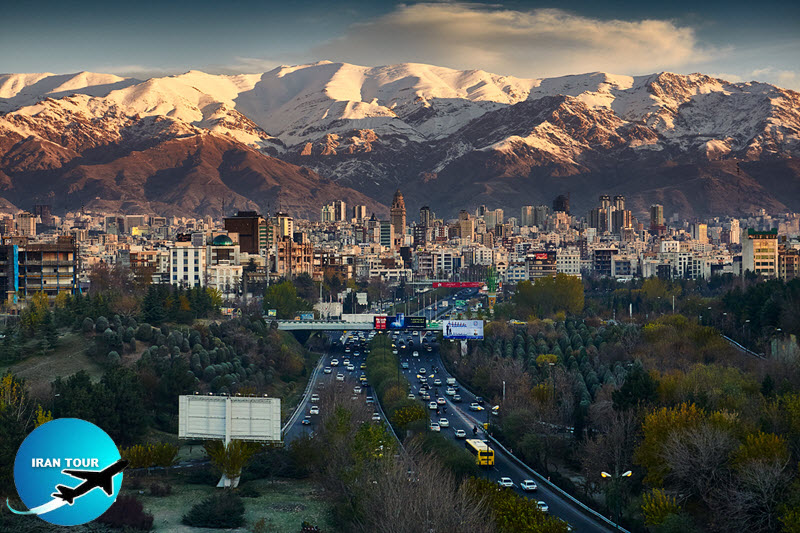 |
Some of the buildings in Tehran have remained from the Qajar and Pahlavi periods in Tehran. Niavaran Royal Palace Complex, which its foundation was laid during the Qajar period, and completed in 1967 during the Pahlavi period. This complex covers an area of 8000 m2 and its architecture is a mixture of pre-Islamic, Islamic, and modern arts. The interior decoration with plasterwork and mirrors and the outside is coated with different Iranian colorful tiles. The Niavaran Complex contains some different palaces: Sahebqaraneh Palace, Ahmad Shah's Palace, Jahan-Nama Museum, a library, and a cultural section. Ahmad Shah's Palace is the last palace of this complex which is built during the end of the Qajar Period in an area of 800 m2. The double-story building is capped by a gabled roof and is decorated with bricks from the outside. The double-story Sahebgaraneh Palace was built by Nasseredin Shah in 1851. Mozaffaroldin Shah made a series of changes and the palace was converted to a museum in 1998.
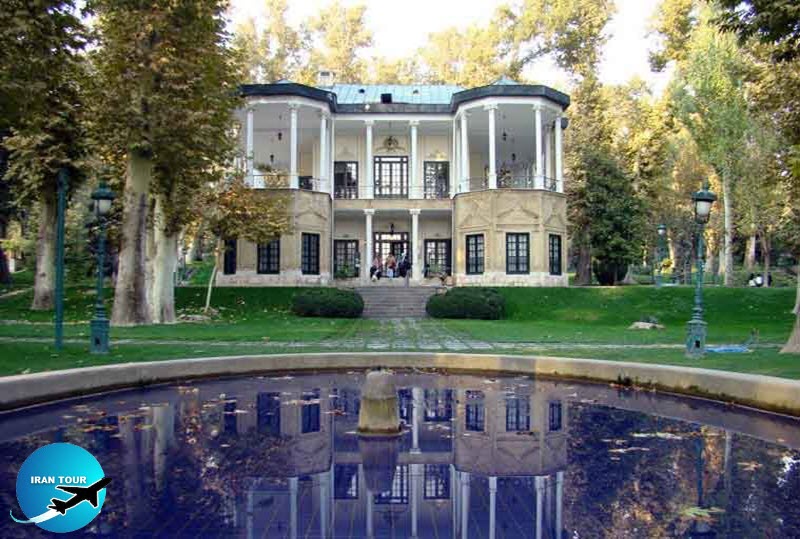 |
Saadabad historical complex which is the summer residence of the Pahlavi family includes a series of palaces and mansions in the northern gardens of Tehran close to Darband mountain. Golestan Palace is one of the oldest palaces in Tehran which was built by Shah Tahmasb, the Safavid king, during the 17th century. Nasseredin Shah the most famous king of the Qajar dynasty changed most parts of the palace and renovated them and also expanded. The domes, the vaults, the columns, and the decorations of the ceilings are an imitation of foreign architecture among which the Diamond Hall is the best example of all new changes. Golestan Palace contains different palaces and buildings like Shamsolemareh Palace (The first 6-floor building in Iran), the Government Building, the Museum Hall, the Marble Ivan, the Green Palace or Anthropology museum, and the Hall of Audience. The museum is a large hall consisting of different objects from the Qajar dynasty up to the Pahlavi era. One of the most famous parts of this Royal Complex is the Mirror Hall which is built in 1291(18th Century) and is decorated with the best mirrorwork, and plasterwork and also is painted by great majesty Iranian painter Kamalolmolk.
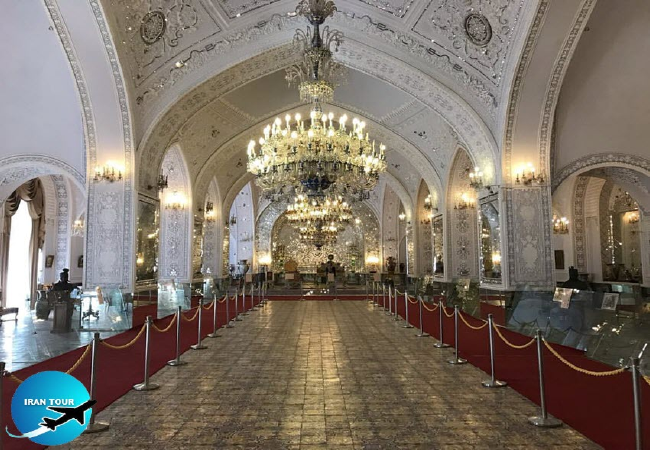 |
Nasseredin Shah constructed a new palace to store the royal gifts and named it Abyaz Palace then changed it to an anthropology museum in 1968. The Karimkhani Arg or veranda, the gallery, the
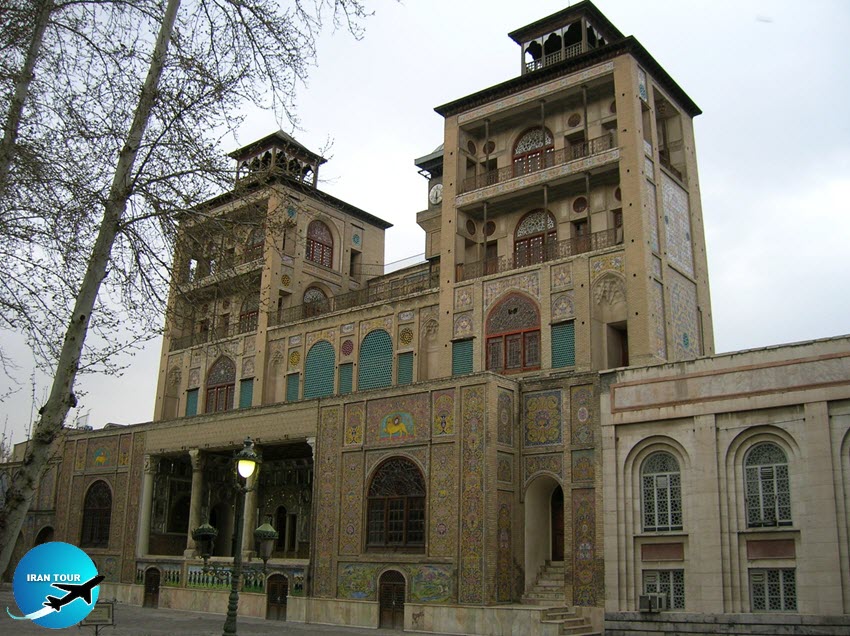 |
Shamsolemareh building which was the tallest building in Tehran was built by order of Nasseredin Shah in the east part of the Golestan Complex in 1867. It is made in western style but the inside and outside are decorated with Iranian traditional architecture.
There were many other palaces around the Golestan Palace which were belonging to the princes. One of the most famous of them which is remained yet is Masoudieh Mansion. This palace is laid near Baharestan Square and was belong to the son of Naser Al-Din Shah Masoud Mirza (Zal Al-Soltan) in 1878 and is called Masoudieh. This palace with a set of gardens, rooms, and beautiful architecture is a perfect example of Iranian culture and architecture. Several music concerts, movie festivals, and other cultural events have been held in the mansion in recent years. Masjed Shah or Imam's Mosque is the biggest Jame mosque of Tehran from the Qajar era and its great colored tiled work dome is a masterpiece of Iranian architecture.
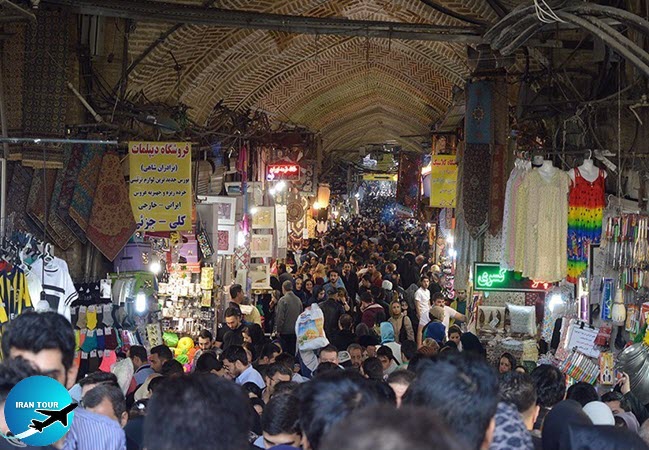 |
Shah Tahmasb one of the Safavid kings ordered to make Tehran a great Bazar and then expanded by Fathali Shah who added several corridors and stores.
The Bazar was increased during Nasseredin Shah's time and each part was dedicated to a specific trade and industry. The most important sections of the Bazaar are the great Sq of Sabze Meydan, Amir's Bazaar, the main hall from Sabze Meydan, Hajjeboldoeleh, Ala
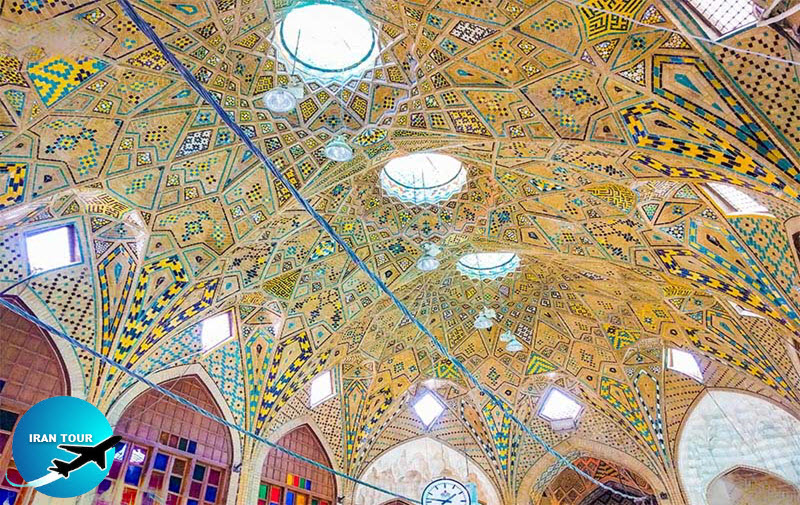 |
Sabze Meydan is a great square in front of the main entrance of the great Bazar and was built at the beginning of the Safavid Period, but Amir Kabir the great prime- minister of Naser Ol din Shah made many changes in 1852. This sq had been an important place for doing the cultural, religious, and social ceremony. The most important features of Tehran Bazaar are various decorations that are evident in different parts of it. Arched ceilings with tile and brick decoration, the colored glass of ceilings for light transmission, brickworks in Caravansaries Beautiful wooden doors, mosques, mausoleums, and other architectural arts are used in Tehran grand Bazar.
 |
There are lots of transformations around the Golestan Palace during the Pahlavi dynasty. National Gate Garden - Malek Museum - Ministry of Foreign Affairs building - National Museum of Iran - buildings of 30 Tir street - and Hassan Abad Square are among the buildings that were built in the Pahlavi era. Hasan Abad Square, with its four historic buildings around the sq, is an example of the historical context of Tehran. Other historical buildings in Tehran consist of Pamenar area, Sorkehe Hessar Palace, Zahir
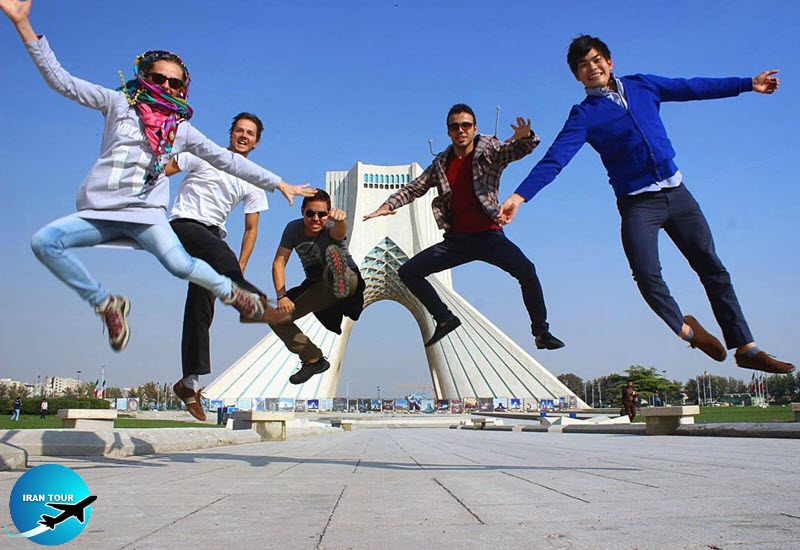 |
The Azadi Tower (Freedom Tower) is the symbol and western gate of Tehran. Hussein Amanat the young Iranian architect won the competition to design the monument, its design is a combination of Sassanid and Islamic architecture. This stony monument which is made with about 8000 slabs of marble and with about 50,000 m2 consists of a Cinema, Theater, Museum, Conference hall, library, and more Cultural sections. Azadi Tower was inaugurated on October 16, 1971.
Milad Tower is a multi-purpose concrete building constructed in 2007.
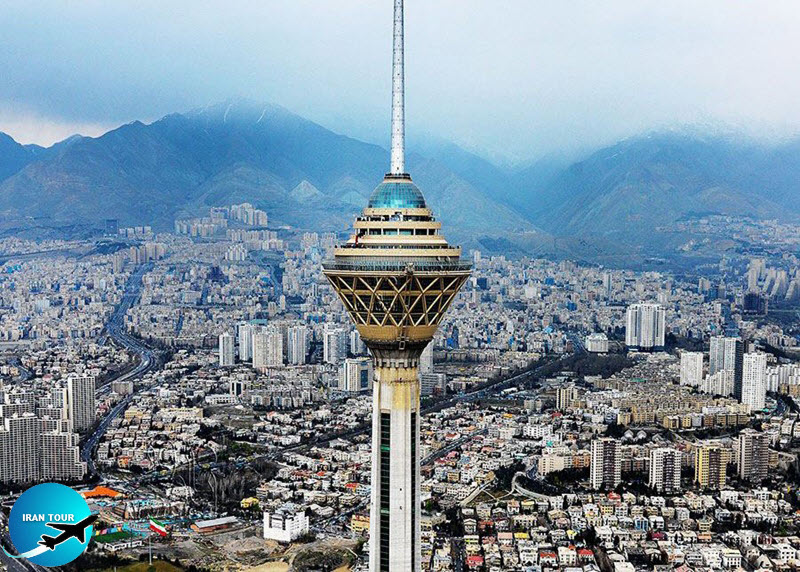 |
This new tower with 435 m (1,427 ft.) from the base up to the tip of the antenna is the 5th largest tower in the world. This tower with 12 floors, has five major parts namely the foundation, the transition (lobby) structure, the shaft, the head structure, and the antenna mast. The head of the tower is a steel structure weighing about 25,000 tons and is composed of 12 stories. On the top floors of the tower, there is a fire-immune area as a refuge zone, a closed observation deck, a cafeteria, a public art gallery, an open observation deck, a revolving restaurant, telecommunication floors, a VIP restaurant, and a dome. This is one of the best places to have a panoramic view of Tehran or waste your evening.
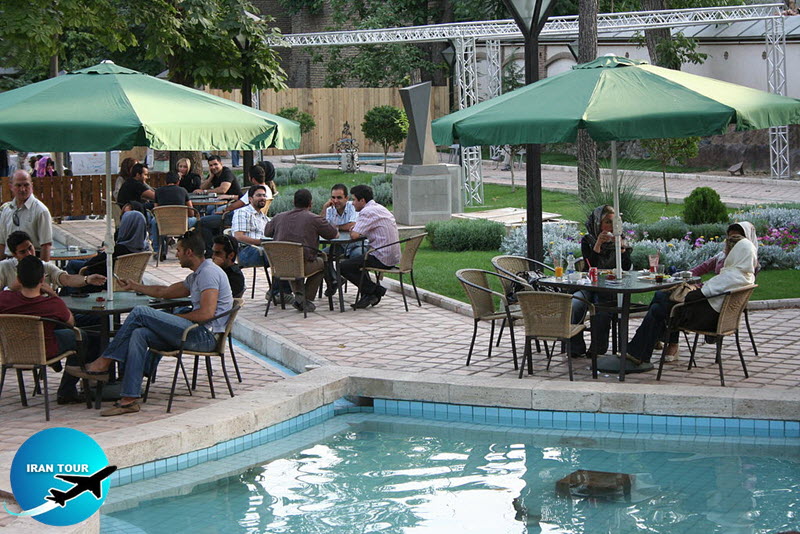 |
Tehran with different art sections
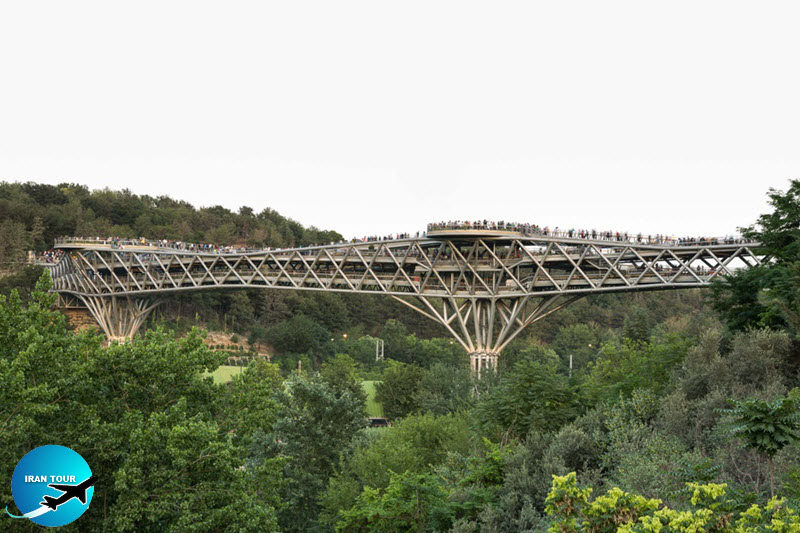 |
Taleghani Park is a nature park where people go for a walk enjoying the natural atmosphere and the park of Water and Fire is a collection of modern games, restaurants, cafés, and more. The bridge itself has a café in addition to the modern beautiful walkway with its lovely night view to the city highways. Tehran is also known for its traditional and modern restaurants some of them very cheap and oldie, some of them supermodern and expensive.
There are several known parts of the city as food zone. Apadana, Niloufar, and Palizi street as a fast food centers (especially the old sandwich shop Feri, Joseph, and Palizi Ice cream), Sattarkhan street and its Doner Kebabs, the Wooden Road in the park of Water and Fire, Moslem restaurant in Bazaar, etc. are some of the thousands of known and lovely restaurants and fast food shops of Tehran. Among the very known cafés, one can mention Café Naderi (one of the first Cafés in the city where some of the most famous artists, writers, and poets of Iran have spent time), Café Tehroon in Bagh Negarestan, and small but cozy Café Shiraz and so many more cafés.
Tehran has several sports complexes, among them Azadi Stadium is the most important one. Azadi The stadium is an all-seater football stadium that was inaugurated on 18 October 1971 and is the home stadium of the Iran national football team. In the beginning, the stadium had a maximum capacity of 120,000 visitors but was decreased to 84,000 after renovations in 2003. On the big occasions, the crowd swells well beyond that. The design of the stadium amplifies the noise across the pitch.
Azadi Stadium was voted the most intimidating in Asia. The stadium is part of the much larger Azadi Sport Complex and is surrounded by a rowing river, football training, a weightlifting complex, swimming facilities, and indoor volleyball and futsal courts, among many other amenities. It was built to host the 1974 Asian Games and has hosted the 1976 AFC Asian Cup. The stadium also hosted the AFC Champions League final on two occasions: in 1999 and 2002. Last but not least Tehran is known as a commercial center for the Iranian people. Several malls and shop centers like Tajrish Bazaar, Tandis, Tirajeh, Almas, Hyperstar, Palladium, etc. are to be mentioned in this part.
- Details
- Category: Tehran Tourism
































